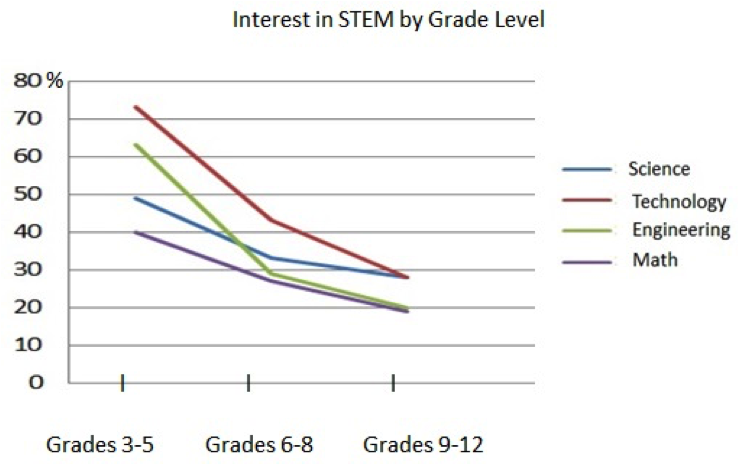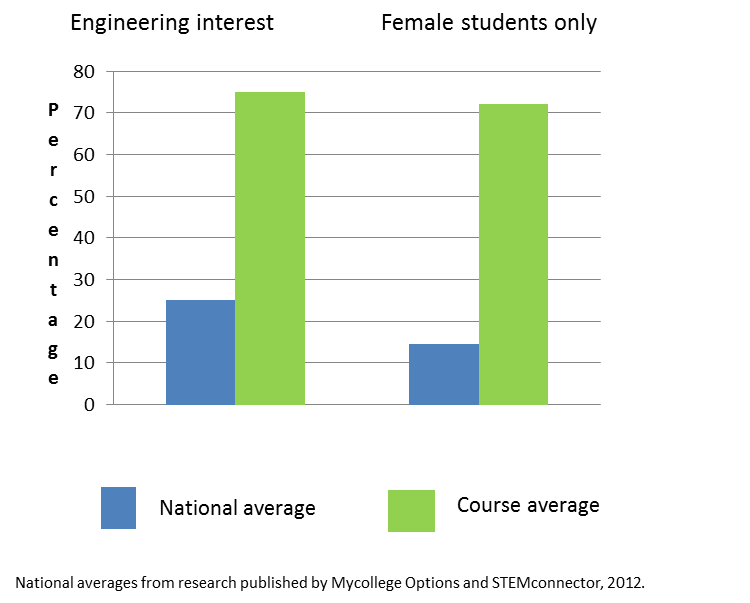What do students learn?
- An introduction to fundamentals across a range of engineering and design fields, including material science, structural and mechanical engineering, product design, manufacturing, energy, computer science, medical technology, architecture, and urban design;
- Critical thinking about technology and sustainability;
- A cutting-edge design methodology used across engineering and design professions today;
- A new way of observing the natural world and the built environment, and an entirely new skill in abstracting good design from the former to redesign the latter;
- Greater appreciation for the importance of engineering and design, deeper esteem for the natural world, and higher aspirations for the performance of human technologies
What do students do?
- Use scanning electron micrographs to understand the internal architecture and performance of materials
- Explore material science and structural engineering through the example of schoolyard trees
- Redesign common objects to optimize material use, based on how bones grow
- Make cement in a process inspired by coral reefs, without quarries and greenhouse gases
- Design and construct a solar cell, based on how leaves work
- Investigate ingenious approaches to software design, based on how ants find food
- Compare the performance of Styrofoam and mushroom-based foams
- Develop an architectural and urban plan so that millions of human beings and thousands of other species can co-exist
- Create a design innovation inspired by Nature of their own choosing
- And more!
Who is it for?
We currently have one version of the curriculum for post-primary students: it can work for either middle or high school students with slight customization.
Why teach engineering design through a bioinspired approach?
Many reasons. Probably the most important is because it engages students. One graph says it all:

(Data from Heiden, E. O., Cornish, D. L., Lutz, G. M., Kemis, M., & Avery, M. (2013). Iowa STEM Monitoring Project: 2012-2013 Summary Report. Cedar Falls, IA: University of Northern Iowa, Center for Social and Behavioral Research)
Over their K-12 education, fewer and fewer students report being interested in STEM subjects. In other words, the longer students are in school, the less interested they become in learning… the exact opposite result everyone wants.
Education doesn’t have to be this way. One approach is to teach engineering through the extraordinary world of innovation inspired by Nature, known also by various terms such as bioinspired innovation, biomimetics, or biomimicry. Engineering inspired by Nature is one of the fastest-growing approaches to technological innovation today, and responsible for many extraordinary breakthroughs. To give just one example, researchers at Stanford University recently developed gloves that enable a person to climb a sheer glass skyscraper (yes, like Spiderman), based on how geckos stick to walls. An example with more obvious practicality, researchers from Canada and Europe discovered that, by emulating the surface texture of a firefly’s abdomen, they could boost the lighting efficiency of LED lightbulbs by over 50%.
There are literally hundreds of such examples of innovation inspired by Nature today, from computer science to medical technology, product design to architecture. The field is simply exploding and it gets young people (and their teachers!) excited about STEM. Here are two quotes from students who were recently introduced to innovation inspired by Nature. The first is from a 5th grade boy, the second from a female high school graduate:
“After I graduate high school, I would like to get an engineering degree. My goal is to solve some of the earth’s problems before I finish high school. For example, when settlers first came to Texas, they burned wood and buffalo dung for fuel. They were unaware of all the oil beneath their feet. We may be that way right now. There may be potential energy sources all around us and we do not realize it. Using 3.8 billion years of natural solutions, the answer to energy that will not harm the environment may be all around us if we look. I plan to keep looking.”
“I recently graduated high school and until just a few days ago, I had no idea what path to pursue concerning college and career choices…Reading about how biologists use science to design and build solutions for real world issues led me to the area of innovation inspired by nature. I really love nature, science, and using my own two hands to build ideas from my head. How does one make a career out of biomimicry?”
How often do students write with such passion and clarity about STEM? And not just students, but teachers also find this approach to teaching worthwhile. Here’s what one high school science teacher had to say:
“In the classroom, curriculum around biomimicry supplies excellent material for integrated learning and problem based learning. The solution centered focus provides hope-filled explorations of environmental science’s otherwise complicated and troubled conclusions.”
The point is, taught with the right curriculum, students and teachers alike can become extremely enthusiastic about a subject.
There are other good reasons to teach engineering design through a bioinspired approach. Here are a few others:
College prep. Not only do interested students tend to want to go to college more often, but bioinspired approaches to STEM can generate an interest in studying all sorts of related fields, including biology, engineering, and more. In addition, more and more post-secondary educational institutions are adding bioinspired material, courses, departments, and degrees to their offerings.
Future jobs. Innovation inspired by Nature has become a major contributor to the global economy. As a result, biomimicry-related jobs are expected to increase in the labor market. Here’s one economic forecast:
“…in 15 years biomimicry could represent $300 billion annually of U.S. gross domestic product (GDP) in 2010 dollars…Biomimicry could account for 1.6 million U.S. jobs by 2025. Globally, biomimicry could represent about $1.0 trillion of GDP in 15 years…” (Fermanian Business and Economic Institute 2010)
Optimistic and solution-oriented. Not only is this the cutting edge of engineering and design, with a bright future, but it is also a hopeful and compelling introduction to STEM-related fields. Innovation inspired by Nature is a solution-oriented approach to teaching engineering and design with environmental education taught along the way.
 For the last 50 years, we’ve been teaching environmental education like this train picture: making kids aware of problems, but offering few ways out. Though well intentioned, many educators realize this may not be the most effective approach to nurturing awareness, a sense of social responsibility, and a pro-active attitude in young people. Innovation inspired by Nature can provide a hopeful synthesis of environmental concerns with technology, a much-needed improvement to traditional environmental education practices, which unintentionally can leave students feeling despondent about the future, or with the mistaken impression that technology is inherently unsustainable.
For the last 50 years, we’ve been teaching environmental education like this train picture: making kids aware of problems, but offering few ways out. Though well intentioned, many educators realize this may not be the most effective approach to nurturing awareness, a sense of social responsibility, and a pro-active attitude in young people. Innovation inspired by Nature can provide a hopeful synthesis of environmental concerns with technology, a much-needed improvement to traditional environmental education practices, which unintentionally can leave students feeling despondent about the future, or with the mistaken impression that technology is inherently unsustainable.
What’s the curriculum’s track record?
The course was piloted at a public high school in California in the Fall of 2014. After taking the class, 75% of the students reported being more interested in engineering as a result of the course – three times the national average. Female students showed an even stronger jump in interest levels in engineering – five times the national average.
In addition, a full 80% of students reported being more interested in sustainability as a result of the course.
From the evaluation by the teacher of the pilot:
“The course was a wonderful way of culminating the year of information about the environment with hopeful ideas for our future, engaging conversations and optimistic solutions. The students are able to apply their understanding of math, physics, biology, chemistry, environmental science into a new field of engineering and feel successful and engaged in the process. The application of prior knowledge and the introduction into the new way of thinking kept students on their toes and inspired to hear and learn more. It was a wonderful way to respond to the overwhelming amount of concern about our changing environment and gives students a problem solving approach to creating new processes and designs to eliminate waste, inspire benign design and power without pollution. It is also a curriculum that allows each student to focus on something that they are passionate about, research and create something new and then communicate that to their community.”
When asked if the teacher would recommend the curriculum to other teachers, she responded:
“Absolutely. It is the cutting edge in education and has applications in many different fields of study. Students benefit from the skills, the experiences, the conversations and the new way of looking at the problems and a new skill set to solve them.”
And asked if she would teach the course again next year (verbatim):
“ABSOLUTELY I WILL TEACH IT NEXT YEAR!!!!”
Is it standards aligned?
Yes. The curriculum is aligned to the Next Generation Science Standards. Click here to view the alignment document.
Is there professional development?
Yes, please contact us to discuss options.
Is it expensive?
No. The first year is completely free, so you can try out the curriculum and see if it’s right for your needs. We ask for a voluntary donation thereafter, or can negotiate a license fee with your school district if that approach works better. This support helps us maintain this website and continue this work.
What other resources are there?
Slowly, more schools are discovering and adopting this approach to teaching STEM, and more resources are being developed. You can find some of these resources on this website. Another good website for exploring related resources is AskNature.org.





